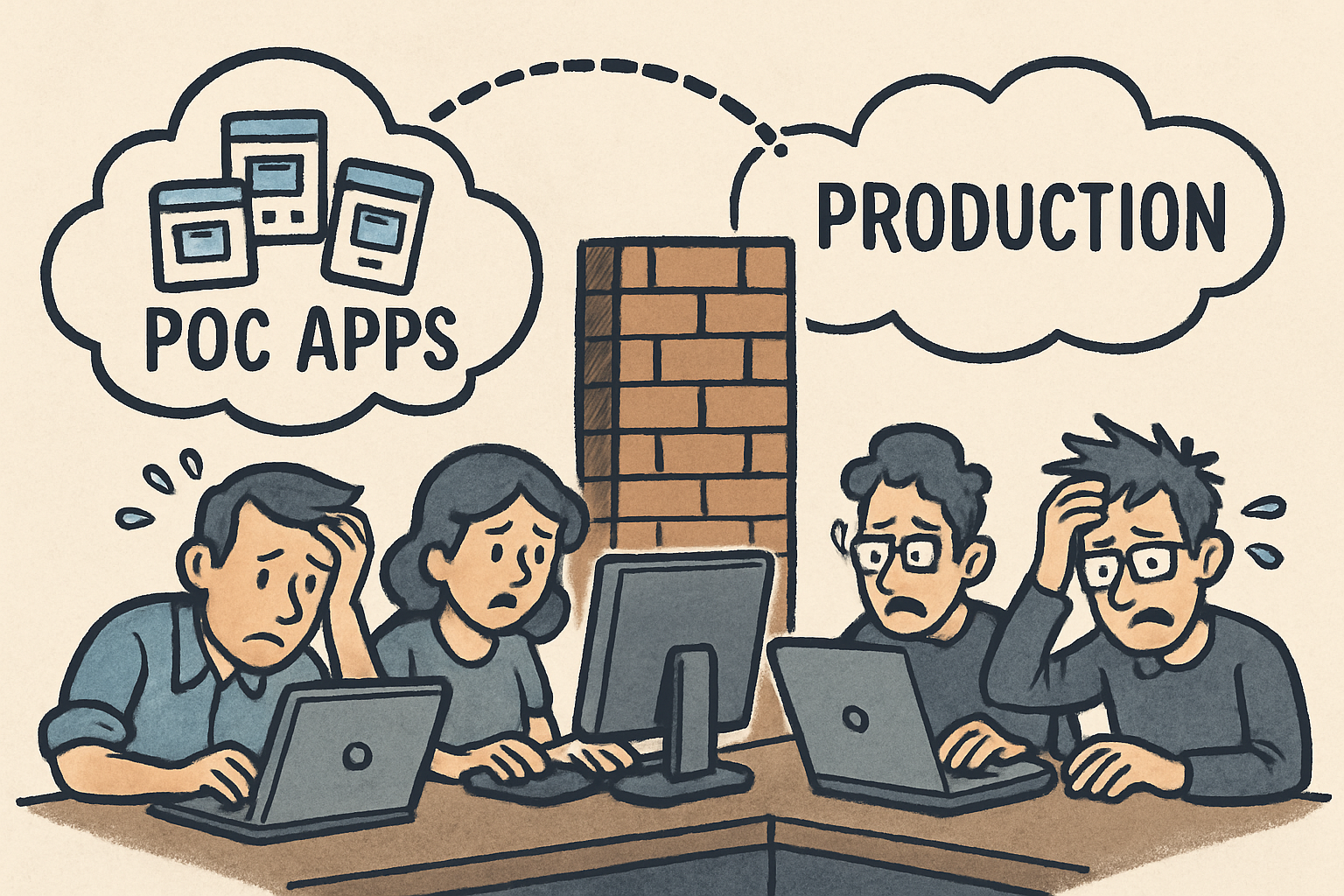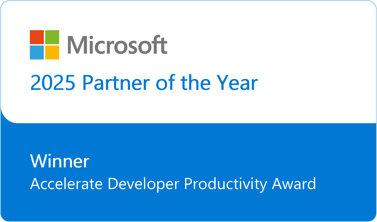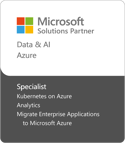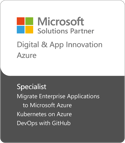In our first post, we explored why GenAI is the defining technology of this decade. But recognizing its potential is only the beginning. The real challenge lies in turning that potential into production-ready solutions that deliver measurable business value.
Many organizations are stuck in the “PoC trap”—where promising prototypes never make it to production. Why? Because scaling GenAI is hard. It requires more than just a model and a dataset. It demands a strategic, structured, and secure approach.
Let’s unpack the most common barriers—and how to overcome them.
1. The Governance Gap: No Guardrails, No Go
One of the biggest reasons GenAI projects stall is the absence of enterprise-grade governance. Without clear policies, automated controls, and security frameworks, GenAI initiatives can quickly spiral into risk.
Imagine a team deploying a chatbot trained on sensitive internal documents—without any oversight on data privacy or usage boundaries. The result? Compliance violations, reputational damage, and a loss of trust.
Solution: Establish automated governance from day one. This includes role-based access control, audit trails, content filtering, and integration with corporate policies. Guardrails don’t slow innovation—they enable it safely.
2. Reinventing the Wheel: Lack of Standardized Templates
Every GenAI use case doesn’t need to start from scratch. Yet many teams waste time building infrastructure, pipelines, and codebases from the ground up. This leads to inconsistent quality, duplicated effort, and slow time-to-value.
Solution: Use standardized templates for infrastructure, code, and deployment. For example, InCycle’s GenAI Accelerator includes prebuilt templates for Retrieval-Augmented Generation (RAG), fine-tuned models, and embedded applications. These templates are production-ready, secure, and optimized for Azure OpenAI integration .
3. Data Deficiency: Garbage In, Garbage Out
GenAI’s effectiveness depends on the quality of the data it’s trained and prompted with. Unfortunately, many enterprises lack the foundational data architecture to support this. Unstructured data—emails, PDFs, call transcripts—often lives in silos. Structured data may be outdated or poorly governed.
Solution: Invest in modern data platforms like lakehouses and medallion architectures. These enable the ingestion, transformation, and governance of both structured and unstructured data. Ask yourself: Is your data secure, compliant, and accessible to GenAI models?
4. Fuzzy Goals: No Business Case, No Buy-In
Too many GenAI projects begin with “let’s try something cool” rather than “let’s solve a real business problem.” Without clear objectives, KPIs, and ROI projections, it’s hard to secure funding—or measure success.
Solution: Tie every GenAI initiative to a strategic business outcome. Whether it’s reducing customer service response time, accelerating drug discovery, or improving employee onboarding, define the “why” before the “how.” Use frameworks that evaluate desirability, feasibility, and viability.
5. The Enablement Gap: Skills and Support Are Missing
GenAI is evolving fast. New models, tools, and techniques emerge weekly. Most teams aren’t equipped to keep up.
This leads to stalled projects, poor adoption, and suboptimal results.
Solution: Build a culture of continuous learning. Offer training, coaching, and hands-on labs. Create internal communities of practice. And don’t go it alone—partner with experts who can guide your journey.
6. Blind Spots: No Visibility into Performance or Cost
GenAI models can be expensive to run. Without proper monitoring, organizations risk runaway costs and degraded performance.
Solution: Implement dashboards that track usage, quality, latency, and cost. Use FinOps practices like chargeback and showback to align consumption with business value. Monitor model drift, hallucination rates, and user satisfaction.
Putting It All Together: The Path to Production
To move beyond PoC, organizations need a structured approach that includes:
- Use case evaluation models to prioritize based on ROI and time-to-value.
- Predefined GenAI templates with built-in guardrails and Azure OpenAI integration.
- Automated infrastructure provisioning for centralized or self-service deployment.
- Performance dashboards for usage, cost, and quality monitoring.
- Enablement programs for continuous learning and change management.
This is exactly what InCycle’s GenAI Accelerator delivers: a better way to go from idea to impact—safely, quickly, and at scale.
Coming Up Next
In our next post, we’ll explore how Platform Engineering is the backbone of scalable GenAI innovation. You’ll learn how curated templates, self-service environments, and automated governance make it easier to do the right things—and harder to do the wrong ones.









